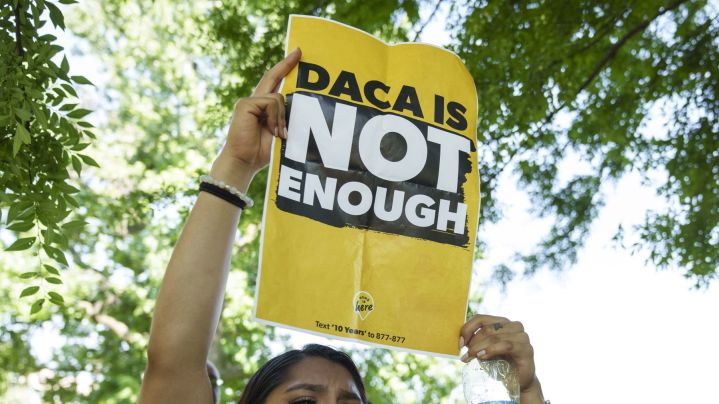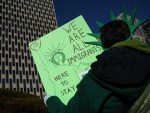What Does It Mean to Codify DACA? — Here’s What You Should Know

WASHINGTON, DC - JUNE 15: Immigration advocates rally to urge Congress to pass permanent protections for DACA recipients and create a pathway to citizenship, near the U.S. Capitol June 15, 2022 in Washington, DC. In 2012, President Barack Obama and his administration introduced the Deferred Action for Childhood Arrivals (DACA) program, protecting eligible immigrants who came to the United States as children from deportation. In 2020, the U.S. Supreme Court upheld the DACA initiative in a 5-4 ruling. (Photo by Drew Angerer/Getty Images)
The official codifying of the Deferred Action for Childhood Arrivals (DACA) program is only two months away. On Wednesday (August 23), the Department of Homeland Security (DHS) issued a final regulation on the issue that will replace the Obama administration’s 2012 memo, which ruled that undocumented immigrants could live and work in the United States if they arrived as minors. The rule is set to take effect on October 31, 2022.
“Today, we are taking another step to do everything in our power to preserve and fortify DACA, an extraordinary program that has transformed the lives of so many Dreamers,” said Secretary of DHS Alejandro Mayorkas. “Thanks to DACA, we have been enriched by young people who contribute so much to our communities and our country. Yet, we need Congress to pass legislation that provides an enduring solution for the young Dreamers who have known no country other than the United States as their own.”
According to Cornell Law’s Legal Information Institute, to “codify” something means to “arrange laws or rules into a systematic code.” What the Biden Administration is doing by “codifying DACA” is making the immigration policy a federal regulation, so it can be protected from legal challenges in the future. This would mean that approximately 611,000 undocumented immigrants enrolled in DACA will no longer have to live fearing deportation.
“For DACA recipients and their family members, receiving deferred action has increased DACA recipients’ sense of acceptance and belonging to a community, increased their sense of hope for the future, and has given them the confidence to become more active members of their communities and increase their civic engagement,” the ruling reads.

The Biden administration will be allowed to accept new DACA applicants once the rule is codified. Experts, however, expect lawsuits will be filed by states like Texas that will delay the new law from being enforced.